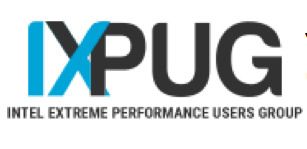This guest post from Intel explores how AI and HPC are converging and and how the two areas of technology — as well as cloud computing — are converging.
This fall, the Intel Extreme Performance Users Group (IXPUG) will host a free conference focused on key high-performance computing, artificial intelligence and cloud computing topics. The conference will also cover the convergence of AI and HPC that the industry has seen in recent years. Co-organized by Sandia National Laboratory and Los Alamos National Laboratory, both IXPUG charter members, the event will take place on the Intel campus in Hillsboro, Oregon.
Despite the fact that the attendees represent a wide variety of organizations and job functions, they all have one thing in common: they want to explore how to get optimum performance that can facilitate discovery for their user communities.
Conference Agenda
This is the semi-annual meeting of IXPUG, the independent user group that was formed four years ago. The IXPUG conference is focused on all aspects of employing and adopting many-core processing technologies and techniques for optimal application execution. It includes topics that cover system hardware beyond the processor (memory, interconnect, etc.), software tools, programming models, new workloads (visualization, data analytics, machine learning, etc.) and more.

You can get more insights into the event and view the final conference program at IXPUG.org.
IXPUG History
IXPUG held its first meeting in 2014 at the Texas Advanced Computing Center (TACC) in Austin, TX, which had a first-generation Xeon Phi processor-based machine. At the time the community was known as the Intel Xeon Phi Users Group.
“TACC had one of the first large installations of the Xeon Phi processors code named Knights Corner,“ recalls David Martin, president of the IXPUG steering committee and manager of industry partnerships and outreach at the Argonne Leadership Computing Facility (ACLF), a DOE Office of Science User Facility.
“Like any other technology product, there was a manual that came with the merchandise,“ Martin says. “But it didn’t really tell you how this complex CPU actually works when it’s installed and interacting within a variety of other systems. TACC realized they had to talk not only with Intel, but many other users in the HPC community who were new to the technology.”
This required more than a one-way communication between Intel and the HPC center and applications scientists, the IXPUG web site notes. It involved building a community dedicated to making the most of the powerful new processor.
TACC authored a charter for the new group. A steering committee was formed composed of representatives from HPC sites around the world that featured supercomputers powered by Intel processors.
Pushing the Envelope
The steering committee found that the scientists and engineers who were investigating extreme scale computing were going far beyond understanding and using the CPU and allied systems. They were exploring the capabilities and interconnections of the entire system.
“We were focused on Intel’s Knights Corner processor,“ says Martin.
“Intel next introduced Knights Landing targeting a much bigger, worldwide community. People began building larger systems and tackling tough scientific challenges. In 2017 we changed the name of our organization to the Intel eXtreme Performance User’s Group to encompass an even broader focus.”
The steering committee found that the scientists and engineers who were investigating extreme scale computing were going far beyond understanding and using the CPU and allied systems.
Today these user investigations include software tools and programming models, as well as new workloads such as visualization, a rapidly growing interest in data analytics, machine learning, and artificial intelligence.
Online Working Groups – Everyone is welcome
One of the ways IXPUG supports its members is to provide forums such as online working groups. These are open meetings – anyone who wishes to join is welcome.
For example, recent working group sessions were held to develop and share tribal knowledge of how to make the most of Intel Xeon Scalable processors. And later this month, a group will meet to discuss how to apply deep learning to problems in cosmology. Two computer scientists at NERSC will lead the session titled “Machine Learning at Scale” that, among other things, will explore how to develop a deep learning-based emulator for cosmological observables that can reduce the need for computationally expensive simulations.
[clickToTweet tweet=”This fall, the IXPUG will host a free conference focused on key high-performance computing, AI, and cloud computing topics. ” quote=”This fall, the IXPUG will host a free conference focused on key high-performance computing, AI, and cloud computing topics. #Intel”]
Also of interest to the IIXPUG community is the Intel Omni-Path Architecture (Intel OPA), a next generation fabric that scales from entry-level HPC clusters to clusters with 10,000 nodes or more. Intel OPA runs at 100Gbps and contains enhancements specifically designed to help supercomputer architects move toward Exascale. The technology will be just one of the many topics discussed at this year’s IXPUG Annual Fall Conference.
And several years from now, when Intel releases the nation’s first exascale system, IXPUG will help provide the venues and organization needed to allow its members to meet and assist one another. This group of dedicated individuals will help the HPC community make the most of what may prove to be a revolution in supercomputer technology.
Learn more or register for the Fall IXPUG conference.




